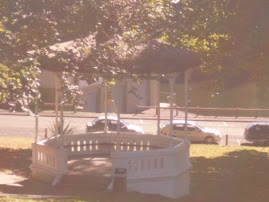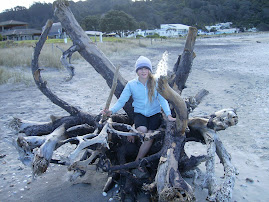

Ernest Rutherford was born on August 30, 1871, in Nelson New Zealand the fourth child and second son in a family of seven sons and five daughters. His father James Rutherford a Scottish, emigrated to New Zealand with Ernest's grandfather and the whole family in 1842. His mother, née Martha Thompson, was an English schoolteacher who with her widowed mother, also went to live there in 1855.
Ernest received his early education in Government schools and at the age of 16 he entered Nelson Collegiate School. In 1889 he was given a University scholarship and he proceeded to the University of New Zealand, Wellington, where he entered Canterbury College. He graduated M.A. in 1893 with a double first in Mathematics and Physical Science and he continued with research work at the College for a short time, receiving the B.Sc. degree the following year. That same year 1894 he was awarded an 1851 Exhibition Science Scholarship, enabling him to go to Trinity College, Cambridge, as a research student at the Cavendish Laboratory under J.J. Thomson. In 1897 he was awarded the B.A. Research Degree and the Coutts-Trotter Studentship of Trinity College. An opportunity came when the Macdonald Chair of Physics at McGill University, Montreal, became vacant, and in 1898 he left for Canada to take up the post. Rutherford returned to England in 1907 to become Professor of Physics in the University of Manchester, and in 1919 he accepted an invitation to succeed Sir Joseph Thomson as Cavendish Professor of Physics at Cambridge.
Rutherford published several books: Radioactivity (1904); Radioactive Transformations (1906), being his Silliman Lectures at Yale University; Radiation from Radioactive Substances, with James Chadwick and C.D. Ellis (1919, 1930) - a thoroughly documented book which serves as a chronological list of his many papers to learned societies, etc.; The Electrical Structure of Matter (1926); The Artificial Transmutation of the Elements (1933); The Newer Alchemy (1937).
Rutherford married Mary Newton, only daughter of Arthur and Mary de Renzy Newton, in 1900. Their only child, Eileen, married the physicist R.H. Fowler. Rutherford's chief recreations were golf and motoring.He died in Cambridge on October 19, 1937. His ashes were buried in the nave of Westminster Abbey, just west of Sir Isaac Newton's tomb and by that of Lord Kelvin.
Ernest Rutherford changed the world by creating the way of splitting the atom which is great he will be remembered by his intelligence in maths and science.





3 comments:
Hey Ashy Mashy!!!!!
Great report on Sir Ernest Rutherford!!!!
I was going to do mine on him!!!!
HamilTRON
hey cool !i learnt alot about him and you obviously put alought of effort into this piece of work. you should be proud! you also obviously didn't copy and paste all of it and put some of it into your own words. cool!!!
bye=]
did i do all my puncuation right???
Post a Comment